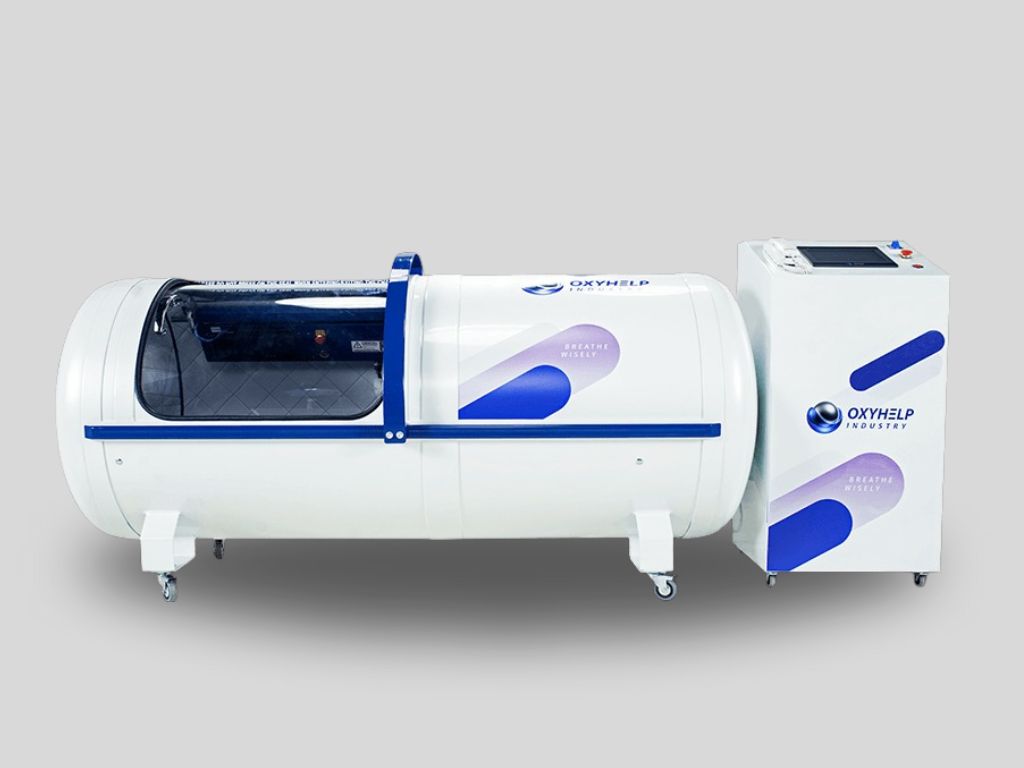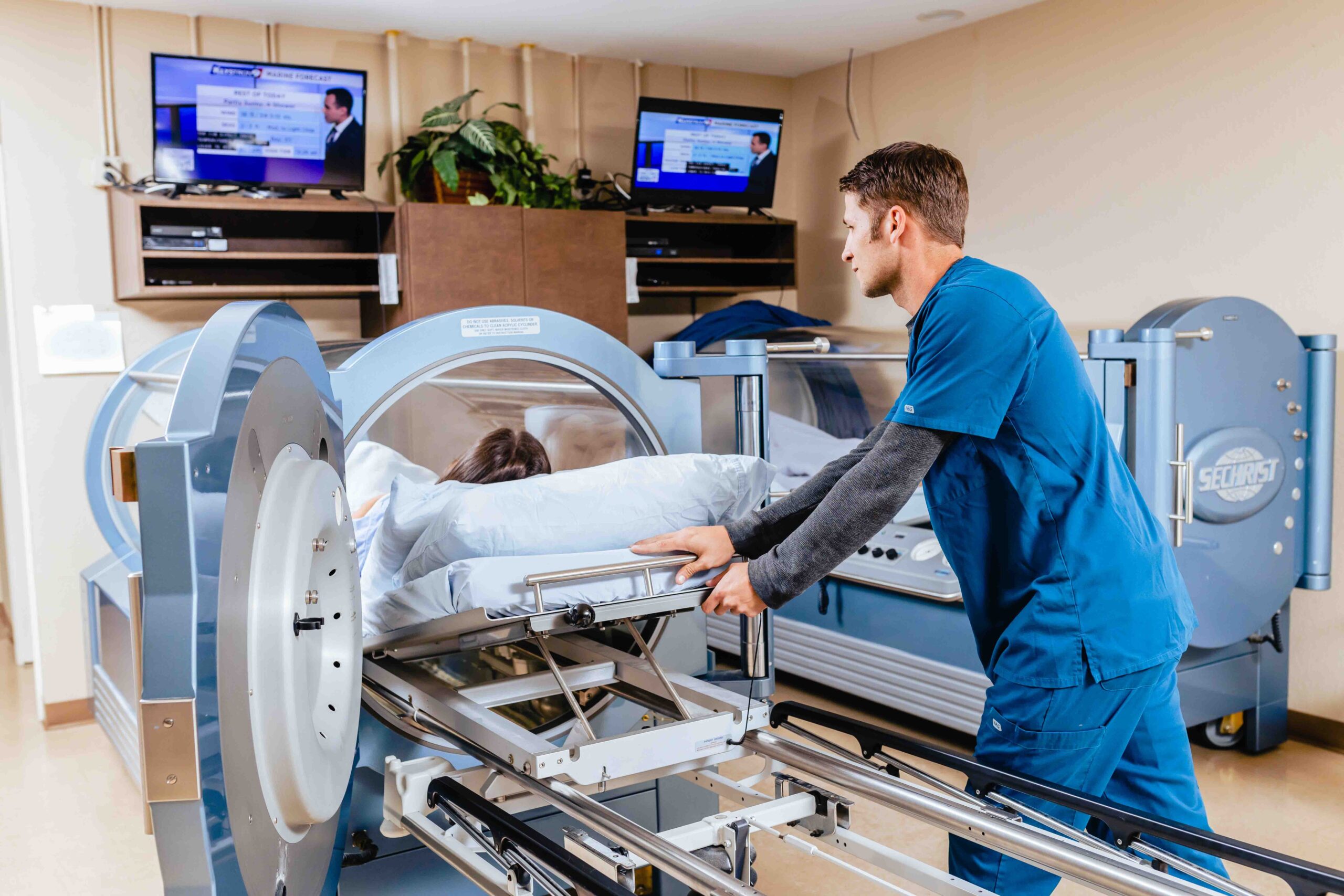Lyme disease, a complex and often debilitating condition, presents significant challenges in medical treatment. Increasingly, Hyperbaric Oxygen Therapy (HBOT) is being recognized as a promising adjunctive treatment for this tick-borne illness. In this context, one critical question arises: what is the right number of HBOT sessions for effective Lyme disease treatment?
Drawing on insights from medical experts and current research, we aim to guide patients and caregivers through the nuances of HBOT in the context of Lyme disease, addressing key considerations such as the use of hyperbaric chambers and the feasibility of HBOT at home.
Lyme Disease and HBOT

Before anything else, it is crucial to understand the connection between these two.
The Nature of Lyme Disease
Lyme disease, caused by the bacterium Borrelia burgdorferi, is primarily transmitted through tick bites. This disease can manifest a range of symptoms, from fever and fatigue to more severe neurological and cardiac issues.
Traditional treatments often involve antibiotics, but for some patients, symptoms persist, leading to chronic Lyme disease. The complexity of Lyme arises from its ability to affect multiple body systems, sometimes resulting in long-term complications.
HBOT in Lyme Disease Treatment
Hyperbaric Oxygen Therapy has emerged as an adjunctive treatment for Lyme disease. HBOT chambers provide an environment where patients breathe pure oxygen at pressures higher than atmospheric pressure at sea level.
This increased pressure allows for a higher concentration of oxygen to be dissolved in the blood, reaching areas of the body that might be oxygen-deprived due to the infection. The use of hyperbaric chambers, including options for hyperbaric chamber for/at home use, has made this therapy more accessible to Lyme disease patients.
HBOT and Lyme Disease Management

HBOT works by enhancing the body’s natural healing processes. In the context of Lyme disease, the high oxygen levels achieved in the HBOT chambers can aid in reducing inflammation, enhancing immune responses, and potentially helping in killing the bacteria. These physiological changes can be crucial in managing the complex symptoms of Lyme disease.
Research and Studies on HBOT for Lyme
Several studies have explored the effectiveness of HBOT in treating Lyme disease. These research efforts indicate that HBOT, when used in conjunction with traditional treatments, can lead to improvements in symptoms. However, it’s essential to acknowledge the limitations and the need for more extensive research in this area.
Determining the Right Number of Sessions
Determining the right number of HBOT sessions for Lyme treatment depends on various factors. The severity of the disease, the patient’s overall health, and their response to therapy all play a role in this decision. Doctors specializing in HBOT often provide guidelines on assessing these factors, emphasizing the need for a personalized approach.
Session Count Recommendations
Medical professionals typically recommend a range of session counts, which can vary based on the stage and severity of Lyme disease. The flexibility of HBOT at home has also influenced these recommendations, allowing for more frequent sessions in a convenient setting.
Tips and Considerations for Sessions

Now, we want to talk about some important tips regarding HBOT sessions.
Preparing for HBOT Sessions
When preparing for Hyperbaric Oxygen Therapy (HBOT) sessions, understanding the procedure and how to prepare for it can significantly enhance the treatment’s effectiveness. Here are some key considerations:
Lifestyle Adjustments
Patients are advised to engage in healthy lifestyle practices leading up to and during the course of their treatment. This includes maintaining a balanced diet rich in nutrients that support healing and immune function. Foods high in antioxidants are particularly beneficial, as they help combat oxidative stress, which can be an aspect of Lyme disease.
Hydration
Staying adequately hydrated is essential. Increased water intake can help ensure that the body is well-prepared to handle the increased oxygen levels, facilitating better circulation and oxygen delivery to tissues.
Equipment
For those considering or using a hyperbaric chamber for at-home use, it’s crucial to thoroughly understand how the equipment works. Users should be trained on the proper operation of the chamber, including how to adjust pressure settings and what safety measures to follow. This is especially important because improper use of hyperbaric chambers can lead to safety risks.
Comfort and Relaxation
Ensuring comfort during the session is vital, as sessions can last for an hour or more. Techniques for relaxation, such as deep breathing or meditation, can be beneficial. In the case of at-home HBOT, the environment should be set up to be as comfortable and calming as possible.
Monitoring and Adjusting Treatment

Continuous monitoring and potential adjustment of the treatment plan are integral parts of the HBOT process:
- Tracking Symptoms: Patients and their caregivers should keep a detailed log of symptoms and any changes that occur throughout the course of treatment. This can include noting improvements in symptoms, any new symptoms that arise, and overall well-being.
- Adjusting Session Count and Frequency: Based on the progression of symptoms and the body’s response to treatment, adjustments to the number of sessions or their frequency might be necessary. This should be done in consultation with a healthcare provider experienced in HBOT treatment for Lyme disease.
- Regular Medical Consultations: Ongoing communication with healthcare providers is crucial. Regular appointments to discuss the progress of treatment, any side effects, and adjustments to the treatment plan are essential for ensuring that HBOT is being administered safely and effectively.
- Responding to Treatment: It’s important to understand that responses to this therapy can vary. Some patients may experience improvements early in their treatment, while others may take longer to show progress. Adjusting expectations and being patient with the process is crucial.
- Safety Considerations: Particularly for those using HBOT at home, safety considerations are paramount. Users should be aware of the signs of oxygen toxicity and the appropriate actions to take in such scenarios. Regular maintenance checks of the hyperbaric chamber are also important to ensure safe and effective functioning.
The Bottom Line
Determining the right number of HBOT sessions for Lyme disease treatment requires a tailored approach, taking into account the individual’s specific condition and response to therapy.
The advent of hyperbaric chambers, including options for hyperbaric chamber for/at home use, has made this treatment more accessible, allowing for flexible and personalized care plans.
